By Keating Zelenke and Josh Joseph
When we found the key to the Press archives, I only remember finding a box or two of old magazines tucked away. The rest of the long walk-in closet was instead full of records. Boxes and boxes of old WUSB promotional records from the ’80s and ’90s — relics from when the radio station was affiliated with the magazine. The stacks of records, stinking of mold and mildew older than I am, occupy their own corner of the room, and scattered throughout are crates of old CDs packed so tightly you can hardly look through them.
Josh — the executive editor at the magazine — and I sifted through each box looking for new listening material for the hours we spent at the office working on graphics together. Each album was judged on the following criteria: 1) how absurd the album art is 2) how absurd the band name is and 3) how absurd the song titles are.
It didn’t start out as a music column, but we both quickly discovered that obscure musicians from 20-30 years ago are some of the most open (and interesting) sources to listen to and write about. Since then, we have listened to over 50 records and CDs and spoken to more colorful characters than I thought I would in a lifetime.

I found Joey Skidmore’s album The Word is Out on our first trip into the archive and almost thumbed past it. His name was normal compared to the Australian-vampire-goth-rock trio Steak Kave. The album cover was much more low-key than the 1989 Slack album Deep Like Space — which depicts three nude people walking across the Oregon prairie, skin and genitals sagging underneath the midday sun. However, a portrait of Skidmore on the back was what drew me in. A man with an overgrown mop-top haircut wearing a white, ruffled, pirate-style shirt. And, to top off the look, the photo had been taken from a comically high angle, emphasizing the mop-top-iness of his hair and the intensity of his stare.
A spray-painted Mona Lisa portrait watched over the two of us as we lay on the couches in the office and listened to Skidmore’s gravelly, deep vocals in the middle of the night. Immediately taken with him, our research into his many creative pursuits led us deep down a rabbit hole into the Midwest rock music scene (and eventually to the other subject of this piece, Beatle Bob).
We hope you enjoy learning about Joey Skidmore and Beatle Bob as much as we did. And expect more from the archives. In the words of one Joey Skidmore himself: “There’s still a lot to be done in 2021!”
-Keating
Joey Skidmore
by Keating Zelenke
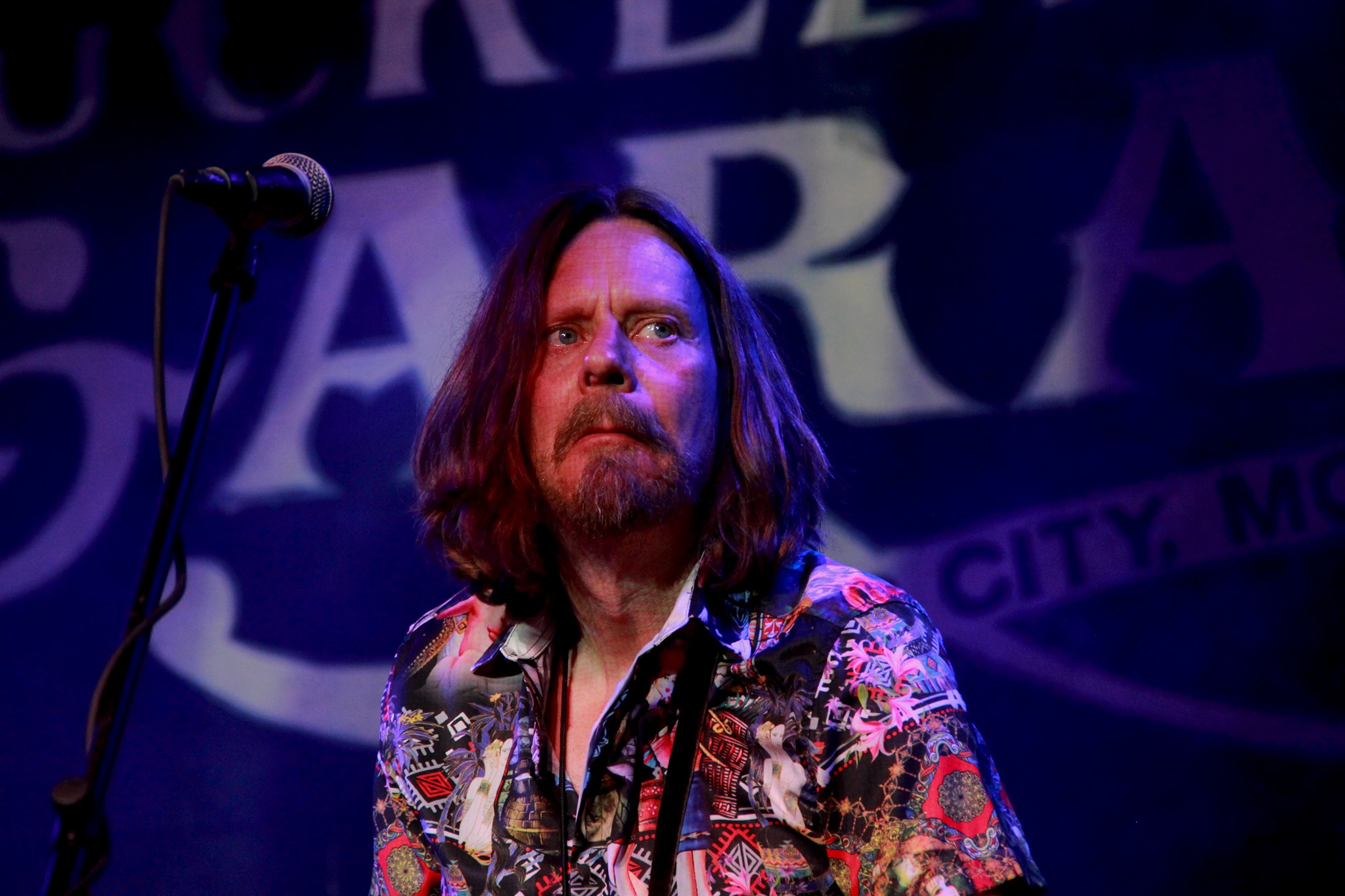
Joey Skidmore, dressed in a tye-dye shirt and sporting shoulder-length blond hair, sits back on his couch and takes a quick sip of beer before sitting up again.
“There’s another one,” he says; another story about his days on tour.
It’s 2003. Verviers, Belgium — a manufacturing town between Holland and the Netherlands famous for textiles (although Joey mistakenly says they’re famous for door knobs and/or bed posts instead). Their resort is situated right next to the venue they’re slated to play the following night. When Joey walks inside, an eerie, familiar feeling washes over him — called The Spirit of 66, it’s a Belgian concert hall in the shape of kitschy American mythology: Harley Davidson motorcycles, Marilyn Monroe and James Dean portraits, American license plates nailed to the wall.
The night they arrive in Verviers begins like most nights on tour with the Joey Skidmore Band: eating, drinking, having a good time in a new city every few days. At the bar, a drunk guy harasses the band.
“He was just kind of fucking with us… I don’t know, he probably didn’t mean any harm.”
The band shakes it off and turns into their twin beds for the night.
In the morning, just as the sun is coming up over the Vesdre River, Joey is jolted awake.
“It sounds like somebody’s outside our hotel room baa-ing like a sheep,” he says now, in 2021, from his home in Kansas City, Missouri — and then baas loudly to demonstrate. It’s clear that nearly 20 years later, he still can’t believe it.
Back in his hotel room, Joey is reminded of the guy at the bar from the night before. He hops out of bed “ready to punch the guy,” but when he swings the door to his room open, there’s nothing. He looks right, then left, then right again. The hallway is empty. He closes the door and turns to head back to bed until —
“BAAAAAA!”
(He again demonstrates this loudly.)
Now Mike Costelow, the band’s bass player at the time, is roused from bed and leans out the window to find a field full of sheep right outside their hotel room.
“All these sheep, just wandering around minding their own business,” Joey says. He laughs thinking back on it. “There was a running joke… I don’t think the farmer would like a naked American running after their sheep.”
Joey Skidmore is full of anecdotes like this one from a relatively obscure music career spanning several decades. From a weird amount of success in France to directing the horror-comedy film Kiki Meets the Vampires — in which the main character runs through the streets with his dick and balls out — Joey has amassed an array of eclectic experiences that not very many people can claim they’ve had.
Though the portrait on the back of his 1987 record The Word is Out may have pulled us into Joey’s orbit, the research really found us when a stack of papers fell out of the album sleeve along with his record. The papers were actually photocopies, yellowed after over 30 years in the archive, of nearly every single thing that had ever been written about his record up to the point he sent it to WUSB, mostly from various obscure college papers all over the U.S. On some of the pages, he has meticulously highlighted, boxed in and circled the parts specifically about him.
At that point, we needed to know more.
On Spotify, we found our first golden nuggets: “Butt Steak,” written and performed by The Skid (as one of the old college reviews called him), and “Teenage Pussy from Outer Space,” a cover of a song by San Francisco rockabilly band Buck Naked and the Bare Bottom Boys. “Butt Steak” is actually one of Joey’s most popular songs in America, thanks to airtime on some college radio stations.
Then we found his YouTube channel, which is definitely worth a watch. His film reel includes short films — like Legend of the Shoe Man, a mockumentary filmed in the Ozarks — and feature length films — including the aforementioned Kiki Meets the Vampires as well as a trailer for an unreleased documentary about 1970s rock legend Jim Dandy, who was known for crazy performances where he often mimed fucking a washboard onstage before destroying it altogether.
Joey’s father had been a promising opera singer before getting married and leaving his music dreams behind. Joey grew up on the classical music his father admired, as well as the classic rock albums from his childhood during a golden age for rock and roll.
“He thought rock and roll was kind of lowbrow,” Joey said of his father. “Unsophisticated, not high art.”
Still, he bought and listened to an endless stream of rock records, especially British rock bands — The Who, The Beatles, The Rolling Stones — plus the classic American legends that inspired those bands, like Chuck Berry (who he actually met twice). Though Joey’s father appreciated music as a career, it took him a while to come around to the idea of rock. Now, Mr. Skidmore Sr. attends all of his son’s big shows.
During high school, these records kept him company, alongside comic books, campy horror films and his childhood cat, Sigmund. As a scrawny kid in “redneck” Missouri, Joey was an outcast — now he’s a star at his school reunions. Though he says his childhood was hard at some points and fairly lonely, he never lost sight of his musical ambitions.
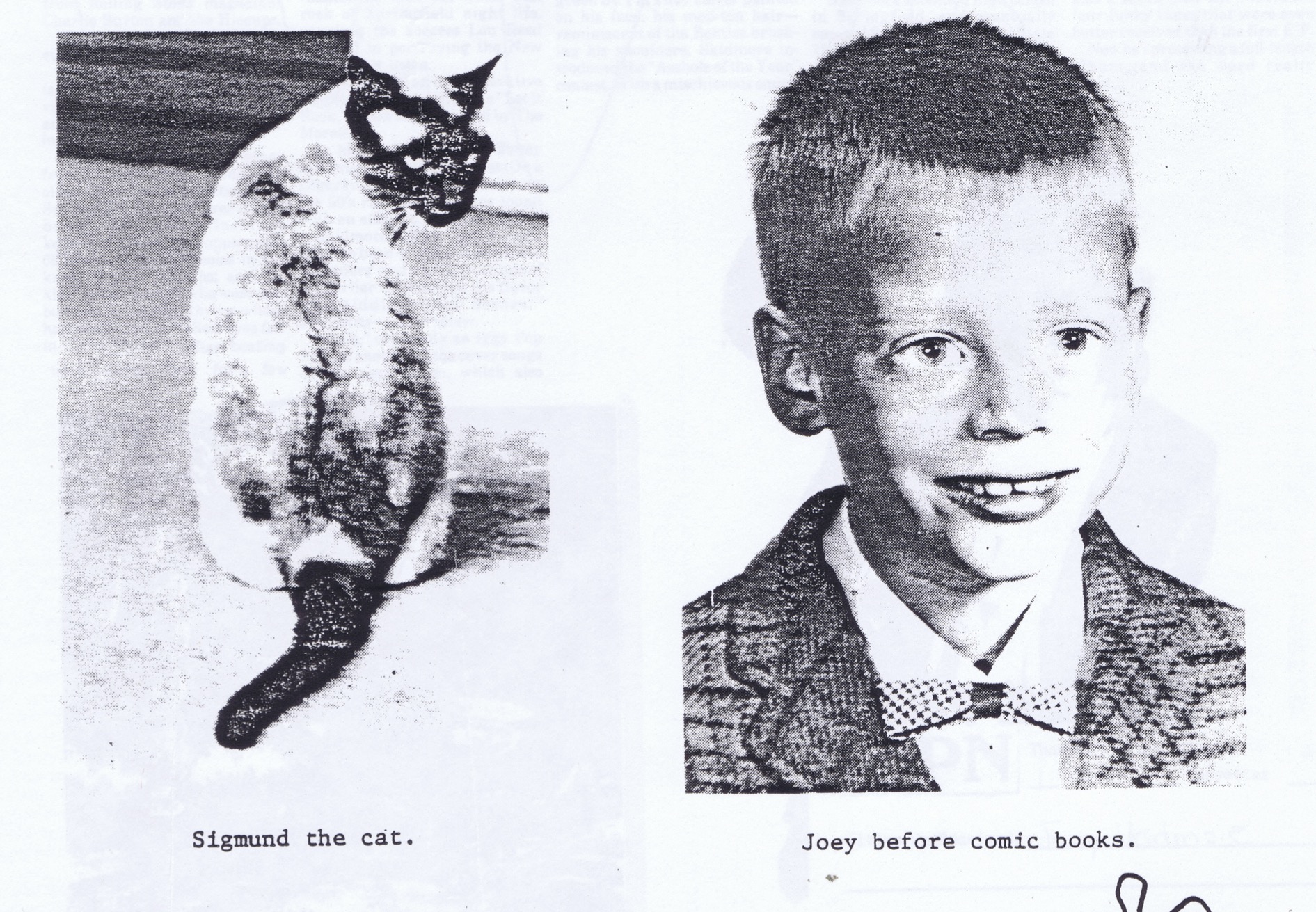
This is key to understanding Joey Skidmore: his rock career was not destiny as much as it was a constant and deliberate decision he made at every juncture of his life, even when he lacked support from the people who were supposed to be there for him unconditionally.
“About my mom, she was never supportive,” he said, and it’s clear that the rejection still stings. “She always thought I’d end up on drugs or something.”
Joey dropped out of college after a year or two and quit his factory job to work as a roadie for the legendary Springfield rock band The Morells, schlepping gear from venue to venue. Lou Whitney, the band’s bass player and sound engineer, affectionately called Joey “the worst roadie” in Missouri. The Morells often invited Joey to play a song or two onstage with them at their gigs, and later, Joey would hire Whitney to record “The Word is Out,” which they did in Whitney’s recording studio — formerly a dentist’s office.
Later, after his album was released, he individually packaged and sent as many records as he could afford all over the world — from the Netherlands to France to WUSB here on Long Island — complete with those packets of highlighted reviews that would fall into our laps over 30 years later. It’s funny how things work out sometimes.
Joey has never lost his determination, but he’s not blind to reality either. Eventually he’d go back to school and get an MFA in theatre (focusing on sound design) and an MA in communications. He’s been a professor and musician for the past several years, now chipping away at his dissertation to get a doctorate. Parallel to his teaching, he has put out an additional six albums in the past thirty years. When he taught at Avila University a few years ago, he took advantage of the film department and sat in on classes to learn the skills he’d later use to make Kiki Meets the Vampires and Legend of the Shoe Man.
This leads to what is maybe the most important lesson to be gleaned from Joey Skidmore: just show up. He did not wonder if people would listen to or watch what he made, nor did he wonder whether he was capable of even making things at all. He just showed up and made them. At 20 years old, I am still trying to learn how to do that myself. I’ve spent so much time being afraid of looking stupid, time that I could have instead spent growing. I am still in awe of the bravery it has taken Joey to make things knowing he’s not a professional, whatever that word means.
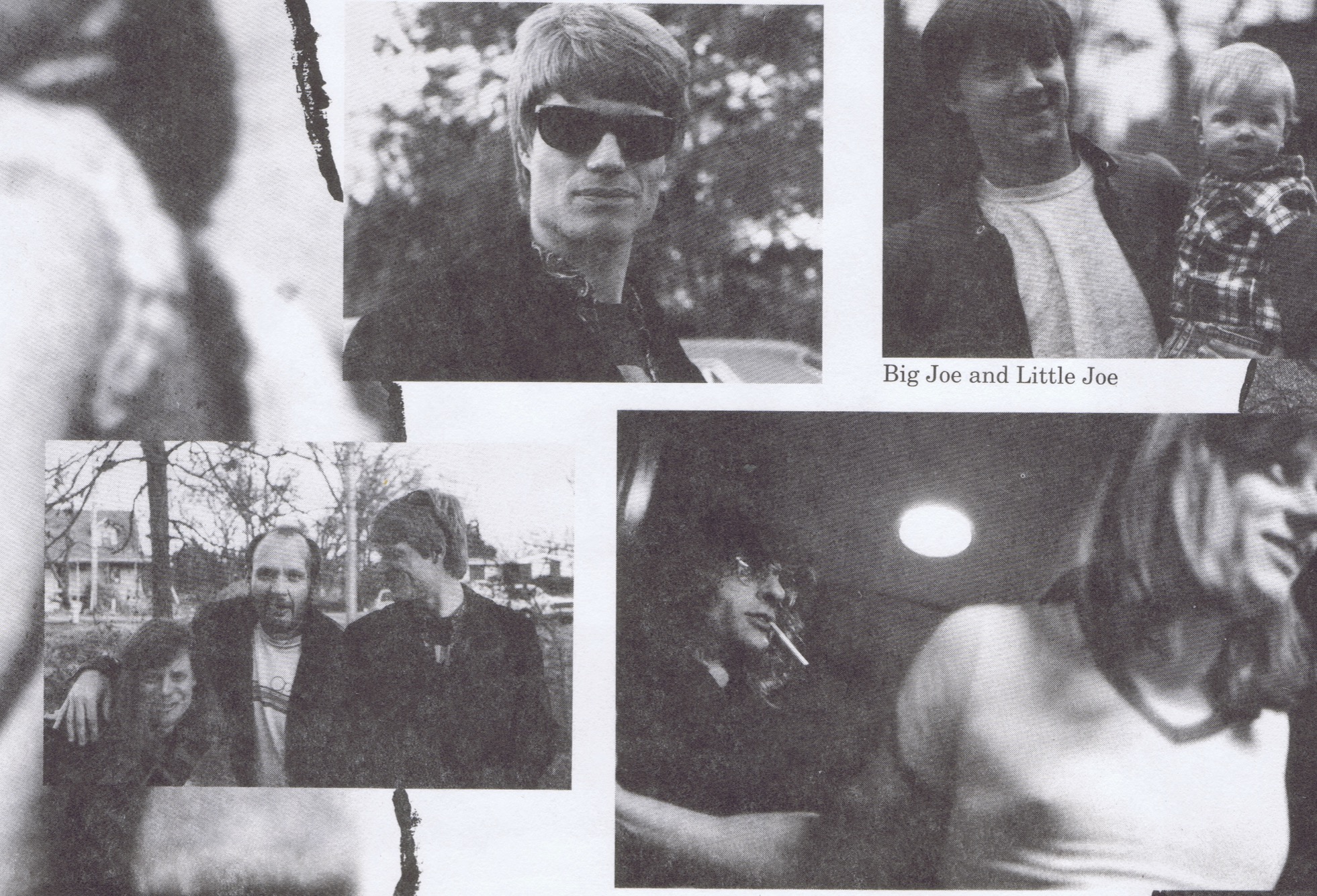
There’s also a distinctly self-aware comedy to Joey’s art. People try to use it against him like he gives a shit about what they think, as though he cares whether or not they’ll take him seriously, or if they have the same sense of humor. These critics have warned him that his albums could be put next to Jerry Lewis in the comedy section of the record store.
“I got a damn solicitation from somebody called Picklehead,” Joey said, referring to a comedy music website that’s been running since the late 90s. He laughs when he says it though, and his face looks warm and red from reminiscing. He knows his projects are tinted with humor, and he likes them that way. Comedy and art are not mutually exclusive, and what Joey does sits at a delicate intersection between the two — he has described his music on more than one occasion as “pure, unpretentious rock and roll.” We spoke about humor in music in the context of “Butt Steak,” in particular.
“It was just kind of a running joke between some of the guys I jam with like, yeah, I’m gonna go home and my wife’s, you know, gonna cook up a big butt steak…” he said, “but it had such a good groove to it.”
Our conversation eventually devolved into something more casual and friendlier than a press interview. I got the sense that Joey disarms people fairly easily with his warm accent and easy vulnerability. Soon, we were discussing the TV shows we were watching, and he was telling us how he “got fat” during the pandemic. He introduced us to his wife Iryna over Zoom and invited us to stop by sometime if we were ever in Kansas City. I’ve been waiting for an excuse to go out that way ever since — maybe for Skid-O-Rama, Joey’s annual music festival he holds right out of his backyard. Josh and I have also joked on more than one occasion about spending Thanksgiving with the Skidmores.
Joey’s currently working on a new project called Nuclear Banana with a supergroup of rock artists he’s befriended over the past several decades. Their new single, “Scooter Girl,” came out late last year. Give it a listen for a taste of his deep vocals and classic rock guitar riffs. Watch the music video to get a taste of his DIY feel, complete with archival footage and a very saturated Joey dancing in front of a psychedelic green screen. Joey and the other members of the Nuclear Banana project approach “Scooter Girl,” with the same sense of freedom and humor that colors everything Joey makes and sets him apart from more mainstream musicians.
Beatle Bob
by Josh Joseph
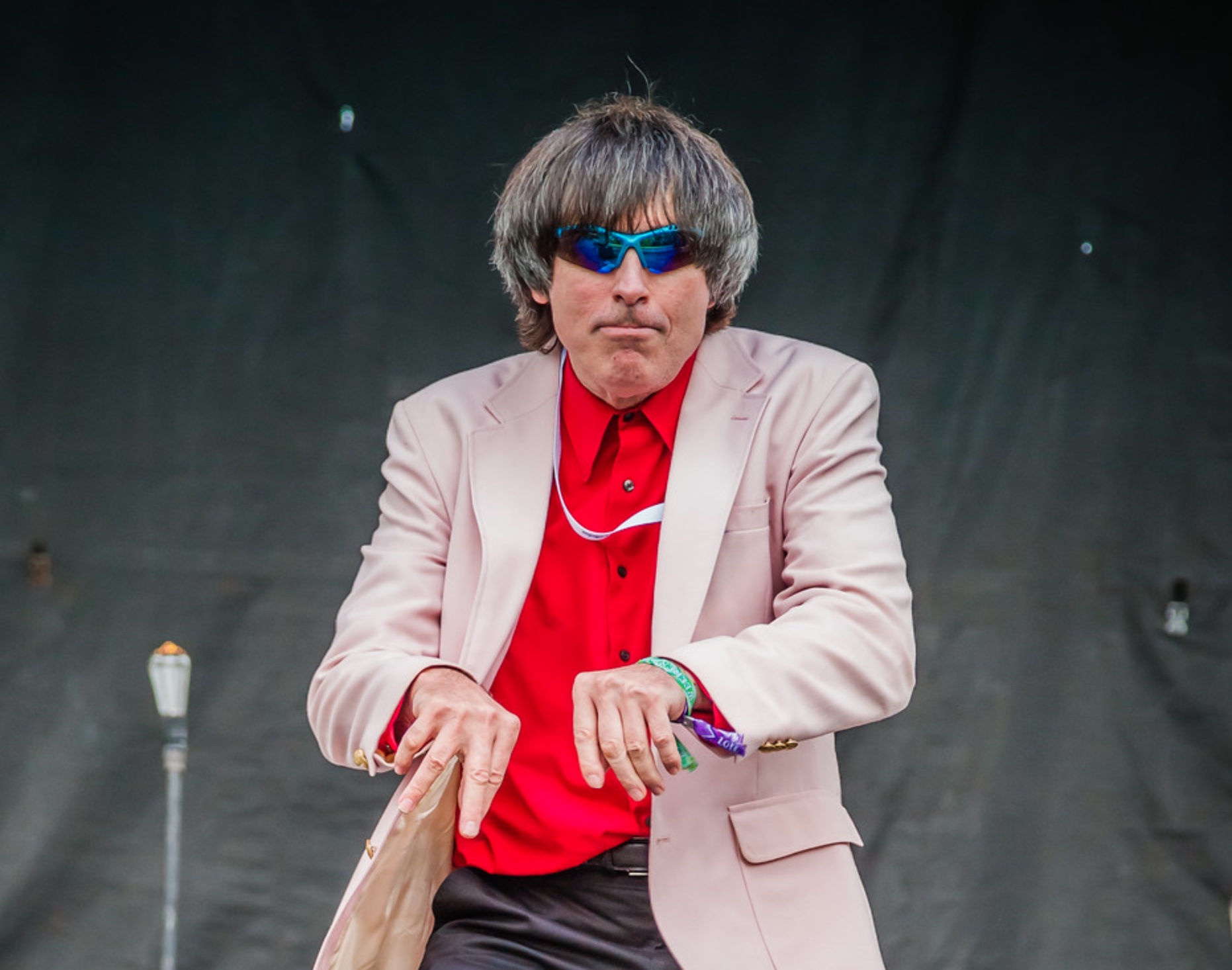
He shuffles back and forth within a couple feet of space. He jerks his arms up and down like he’s operating ten invisible typewriters, pivoting his hips to no particular rhythm as his hair sways in sync. Occasionally, he swings his arms out, and then down again, sketching out shapes only he can see. He spins around as a few stray hairs fly upward, pointing and jabbing at the air behind him before facing forward again.
One thing that cannot be denied about the man — he is a consummate professional. Throughout his performance, his bottom lip is pushed up and his chin is wrinkled with focus. When he shows his teeth, he isn’t smiling. It’s easy to imagine his eyes, invisible behind a pair of black wraparound Oakleys, fixed on an arbitrary spot in the crowd, unfazed by his audience.
But who is this man, this dancing machine?
Born Robert Matonis in 1953, he goes by Beatle Bob, and as he sways and sashays across stages and through crowds, he attracts eyes almost magnetically. An oversized bowl cut swings around his stubbly square face, covering his ears and the arms of his Oakleys. His wardrobe is a rainbow of blazers that evoke the 1960s, accentuating his lanky 6-foot-4-inch frame. He looks less like a fifth Beatle and more like a Beatles-themed fever dream.
When I say he’s a professional, I mean it. He has brought his jittery brand of dance to concerts and shows in the St. Louis area every night for the past 25 years. With no breaks. Whether he pays to attend, gets in for free or assumes the identity of a local radio station employee to get a press pass, Beatle Bob shows up, gets in and gets down.
Beatle Bob seems like he emerged from the womb and into the St. Louis music scene fully formed. He is the perfect crystallization of urban mythmaking, just obscure enough to avoid the public consciousness at large and just famous enough to garner a cult following. We first found him in a trailer for Joey Skidmore’s documentary on Jim Dandy, the cherry on top of a series of increasingly bizarre discoveries that night. For a brief interview clip on camera, his look was intact: same frumpy suit, same bowl cut, same sunglasses — even in the hotel room where the interview was filmed. The lower third text described him as a “Musicologist & Exotic Dancer.”
Soon we were fully in the weeds with Beatle Bob. There’s a tribute song, interviews, mini-documentaries and clip after clip of his public appearances. And sure enough, no matter the venue, he’s just offstage, shaking, spinning, poking and prodding in all directions. In a dimly lit bar, he’s swiveling to a rocking cover of Bill Withers’ “Use Me.” At a St. Charles coffee shop’s open mic night, he’s hunched next to an acoustic three-man band. In a tent at Bonnaroo 2008, he’s caught on a hazy camcorder video in front of a country act. In one clip, he appears in the back of what could otherwise be a funeral home, behind rows of empty chairs, clapping and swinging to “Mule Skinner Blues.”
Keating messaged him on Instagram that night, not expecting a reply. Her request was purposely stilted and flowery — “I have become enthralled with your arhythmic kinesthetic expertise. I’d love to have a conversation with you about music, about dance, about life, about anything.” After twelve days of silence, he shot back a reply at 12:30 a.m.: “Yes I would be interested!”
A month later, we’d be eagerly dialing his cell phone, prepped with questions about his childhood, his motivation and a slew of random curiosities.
Before he ever hit the dance floor, a young Robert Matonis was christened Beatle Bob by Sister Celeste, a particularly quick-witted teacher at Mount Providence Catholic School in Normandy, Missouri. Sitting in the back of his geography class, Robert had tucked a special Beatles issue of 16 Magazine into his textbook.

“She ran down the aisle and snatched the magazine out of my hand and, in front of the whole class, said ‘That’ll be enough of that, Beatle Bob,’” he told us. “And the moniker stuck.”
Although it was intended as a rebuke, it was a moment of pride for the newly-crowned future icon. At his grandparents’ house, he meticulously combed through his family’s collection of 45-rpm records, familiarizing himself with hit singles from Elvis, Chuck Berry, Little Richard and Lloyd Price. The date Feb. 9, 1964 is ingrained in his memory, even today — the night The Beatles first appeared live on The Ed Sullivan Show as he watched from home. Their pop musicianship, paired with their style, and, no doubt, their matching mop top haircuts, solidified a life-defining obsession in him.
“I just think it all put together was an amazing alchemy of elements that transported me towards Beatlemania,” he said.
For Beatle Bob, it wasn’t just the music, but the world of stuff around the music, that was so enrapturing. He accumulated a collection of merchandise — magazines, pennants, cups. He even began wearing his hair like his idols, “a tricky proposition” at Mount Providence, where the principal once dragged him to the local barber to get it cut. Today his oversized tribute mop top has grayed, but more disposable income has allowed him to amass an array of Beatle-style suits — along with the occasional additional piece of memorabilia on eBay. He still has his original collection.
Young Beatle Bob was also an autograph hunter. He spent nights in the lobby of the Chase Park Plaza Hotel in St. Louis, the spot for musicians and sports teams when they came to town. There he started developing a strategy he’d lean on later in life, one familiar enough that it’s since become cliché — fake it ‘til you make it. He would walk up to the concierge desk and casually name-drop a member of a band (but not the lead singer, to keep it ambiguous). Would he be checking in today? Yes? Ok, great. Then it became a waiting game, but one that often paid off. Some of his most coveted autographs include The Who, James Brown, The Rolling Stones and The Rascals. The thrill of meeting celebrities, people he was so taken with, in real life, kept him on the hunt.
He expanded his taste at KXOK, St. Louis’ local Top 40 station. He became a self-described “gopher” for DJ Johnny Rabbitt, assisting him in exchange for ice cream, six-packs of soda and, most importantly, stacks of 45-rpm singles.
Beyond that point, Beatle Bob’s origin story gets a little hazier — old profiles in local publications either gloss over or fail to explain what happened to him between his time in college and his first real appearances in the local music scene. He told us he’d traveled the festival circuit across the U.S., England, France and Spain — but beyond that, he didn’t elaborate. At some point, he became a social worker, inspired by the compassion he saw at a local summer camp. That became his day job, which, even now, he works part-time.
Sometime in the late 1970s he watched as his friend, rock-and-roll historian Paul Yamada, completely lost his shit at a Dwight Twilley Band concert.
“He just started shaking. He was shaking so bad his eyeglasses fell off and it took him a while to find them.”
Something about watching his friend, a reserved academic and someone he described as being “built like a fireplug,” completely cut loose, stuck in his mind. Why couldn’t he do the same?
Beatle Bob couldn’t pinpoint for us the exact moment he committed his life to dance. Somewhere in the haze of late-70s new wave, he noticed more quality local acts in the St. Louis area, some even putting out singles and albums of their own.
“That helped me when it was a slow night for national acts coming through town,” he said. “That really inspired me.”
He began hitting clubs and festivals more and more frequently. Christmas Eve 1996 was his last true night off. Since then, he’s sought out a new show every night.
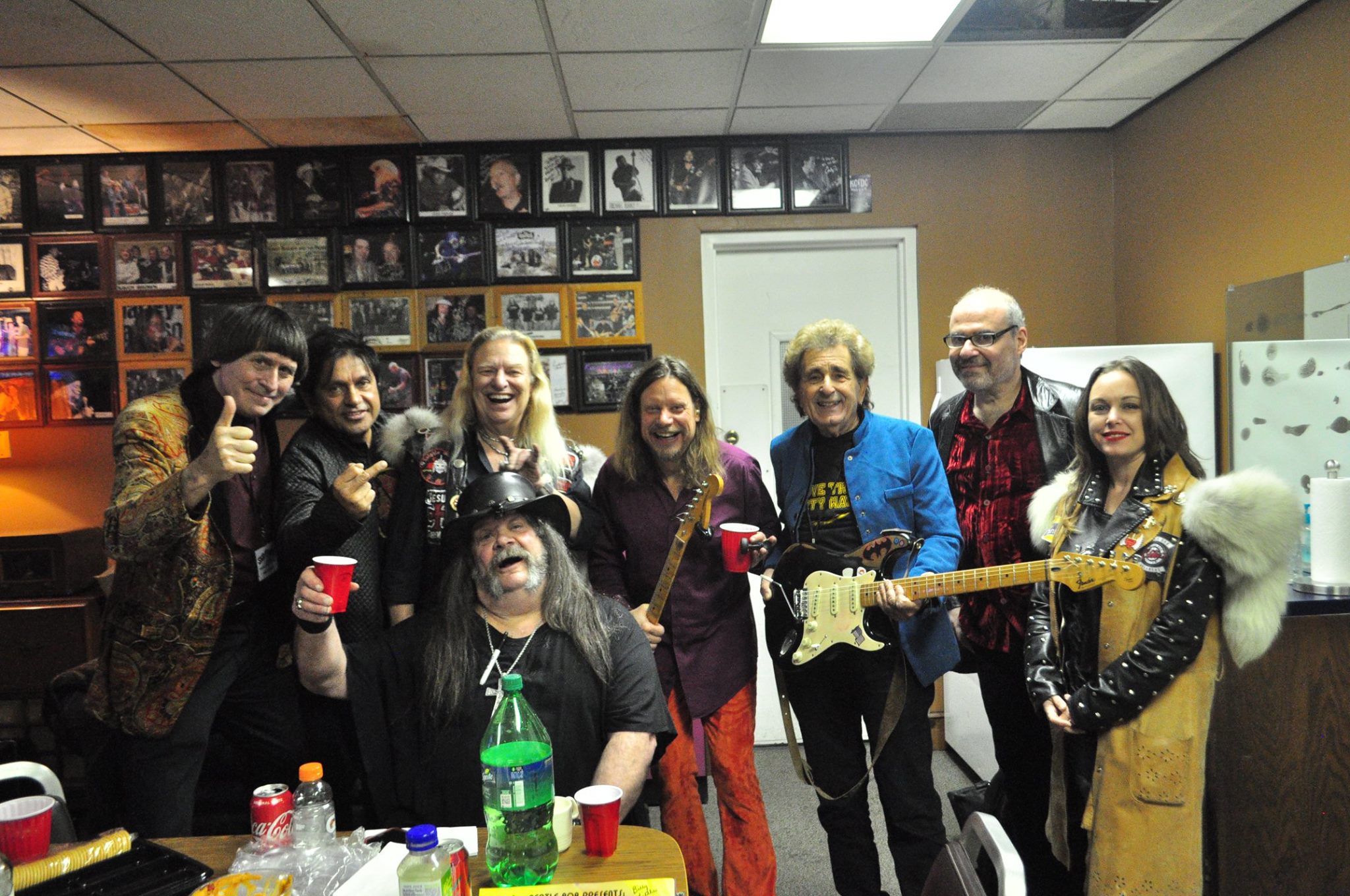
Sometimes he gets in for free, put on the VIP list by an excited band. Other times he sneaks in as a member of the press — he has previously been seen at festivals “representing” radio station KDHX, the now-defunct Jet Lag Magazine, his own internet radio show (which we haven’t been able to locate) and other music publications. Through some combination of sheer luck and fake-it-till-you-make-it trickery, he has evaded the wrath of all the outlets he has claimed to represent.
“I’m not poor, but I’m not rich,” he said. “I could never afford to go to all those concerts or festivals, you know, if I had to pay. So that is a blessing, in the truest sense of the word.”
Once he hits the dance floor, he tries to secure a spot as close to the front of the venue as he can. As soon as the music starts, he starts his own act — hunched forward, jerking back and forth, swinging his pointer fingers, occasionally thrusting his hips or twirling in a quick circle, never quite in time with the music. Sometimes he gets invited on stage to boogie down next to the performers. Other times he doesn’t dance at all.
“There’s a few shows I went to where the opening band wasn’t too hot, and I’m not gonna force myself to dance,” he said. “I’m not gonna boo the band or anything like that… but I would just kinda stare ahead, you know, and just keep my spot on the dance floor for the headliner.”
He documents each show in a collection of spiral notebooks he calls his dance diaries. The weirdest and worst he remembers dates back to 1972, a Ted Nugent and Bob Seger show in a cave so echoey he couldn’t make out a word sung or a note played. Some of the best were at the Sheldon Concert Hall, “a jewel of a place,” whose perfect acoustics draw globally famous acts to St. Louis. His notebooks are now filed away, numbering close to 70 in total. Although the covers have begun to fall off the older ones, he still references them in case he needs to call to mind a show he remembers even decades later.
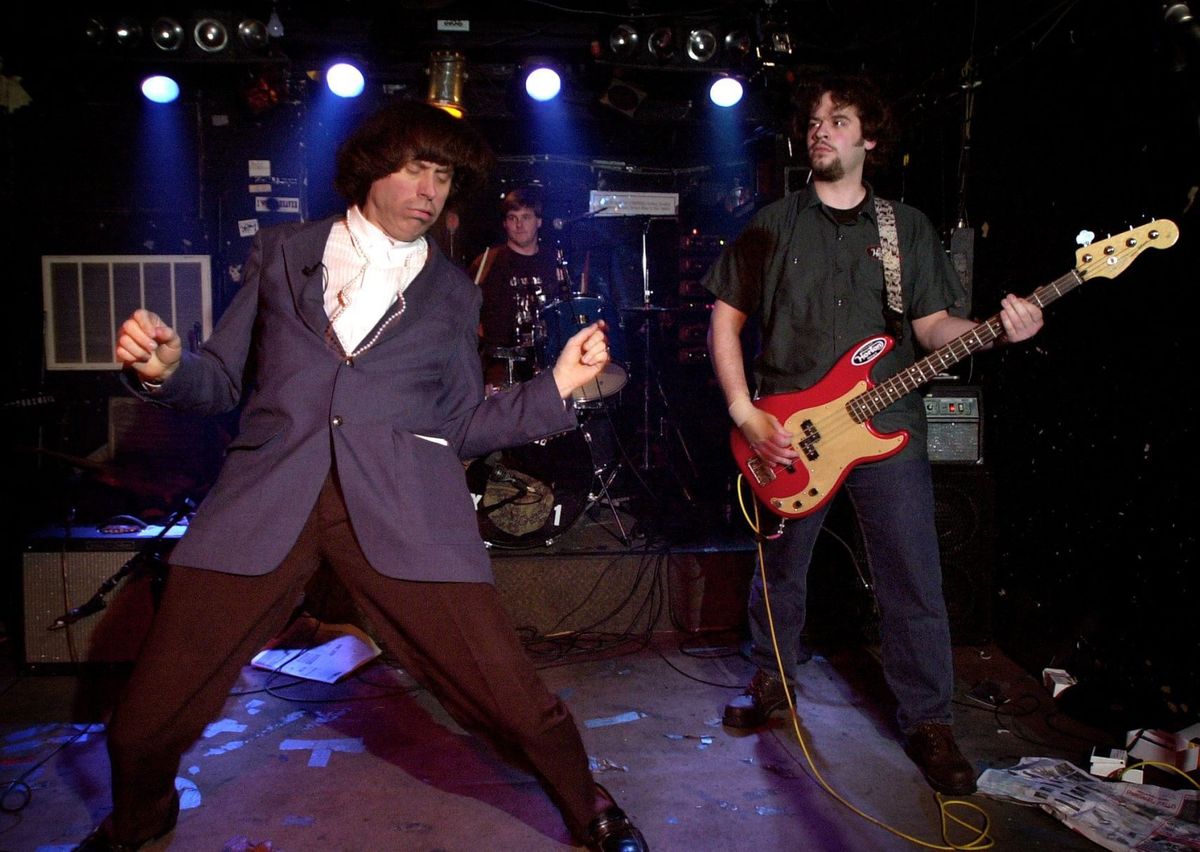
Intentional or otherwise, there is an air of mystery surrounding Beatle Bob. The personal life section of his Wikipedia page offers a strange, brief cross-section of a biography: he is single, vegetarian, tall, abstains from drugs and averages four hours of sleep a night. He has a way of appearing at venues and then, immediately after a show, evaporating into the night air. He has no clear home address — when the Riverfront Times profiled him in 2000, his home had either burned down or flooded according to sources close to him. He never drives, relying on rides from friends to transport him to and from shows, and asks to be dropped off in public rather than where he lives.
His social media presence is equally perplexing. On Instagram under @beatle.bob or on Facebook, where he’s listed as “Bob Beatle,” he posts a stream of random music artifacts, some original and others lifting entire paragraphs from sites like Rolling Stone. He also has a recurring series on 1960s decor, posting 50-year-old photos of living rooms and asking his audience to “keep or change?” After our interview, he added Keating to his text newsletter, and nearly every day since, he’s been sending her paragraphs of decades-old rock trivia, often accompanied by three or four pixelated photos. Sometimes, he even gives us a preview of his next show in the third person:
“Beatle Bob is getting ready to rumble tonight…”
“Beatle Bob is shifting his dancing shoes into heavy gear this weekend…”
“Beatle Bob is preparing to be driven to levels of dizzying heights tonight…”
On the phone, he flatly denied that he’d ever plagiarized any writing, but these allegations are just the latest in a string of controversies that have followed him through the past few decades. He’s been accused of shoplifting from record stores and concert merch tables, incidents he’s previously explained away as “misunderstandings.”
“I wonder if he’s still spry enough to steal CDs from my merch table like he did 15 years ago,” one YouTube commenter wrote beneath a musical tribute.
Some of his detractors simply don’t enjoy his act. Beatle Bob Sit Down, a site created in 2004 to collect stories of aggravation at Beatle Bob’s antics, strung together anecdotes from people who were elbowed or shoved by him as he made his way to the front row, or otherwise had their view obstructed by the 6-foot-4-inch wobbling man in their way.
“There is nothing dumber in the history of rock and roll than Beatle Bob,” one commenter named Richard wrote in 2005. “‘Dancing’ like a demented arsehole, getting in everyone’s way, and relishing the fact that he is, when all is said and done, a complete and utter nutbar, who interrupts everyone else’s enjoyment of whatever he’s leaping about to.”
Beatle Bob told us he’s tried to avoid any media related to him, both positive and negative. He describes his mission as a complete dedication to the pursuit of music, and everything else seems to fade into the background as a result — controversy, praise, fame and public curiosity pass into and out of his orbit, yet he jitters and shakes through it all.
In 2011, he achieved a particularly high honor — and one he said he still looks back on fondly: as part of a spoken-word album teaching children about nutrition, Beatle Bob was nominated for a Grammy.
One threat looms over Beatle Bob’s dancing streak: the COVID-19 pandemic, which shut down the live music industry for a year and a half. Yes, he technically broke his marathon in March of 2020, he admitted to us, but he was right back at it as soon as the first venues reopened in May, dancing with his mask on.
“I didn’t get depressed or angry or sullen,” he said. “You make up for it, you have more time to play CDs or records.”
He rationalized the gap with a reference to Baltimore Orioles player Cal Ripken Jr., whose longest streak of games played was broken by a baseball union strike in 1994.
“A friend said, ‘You know, Cal Ripken missed those last three months of the season ‘cause there were no games, so how can you say you missed a game when there was no games to attend?’”
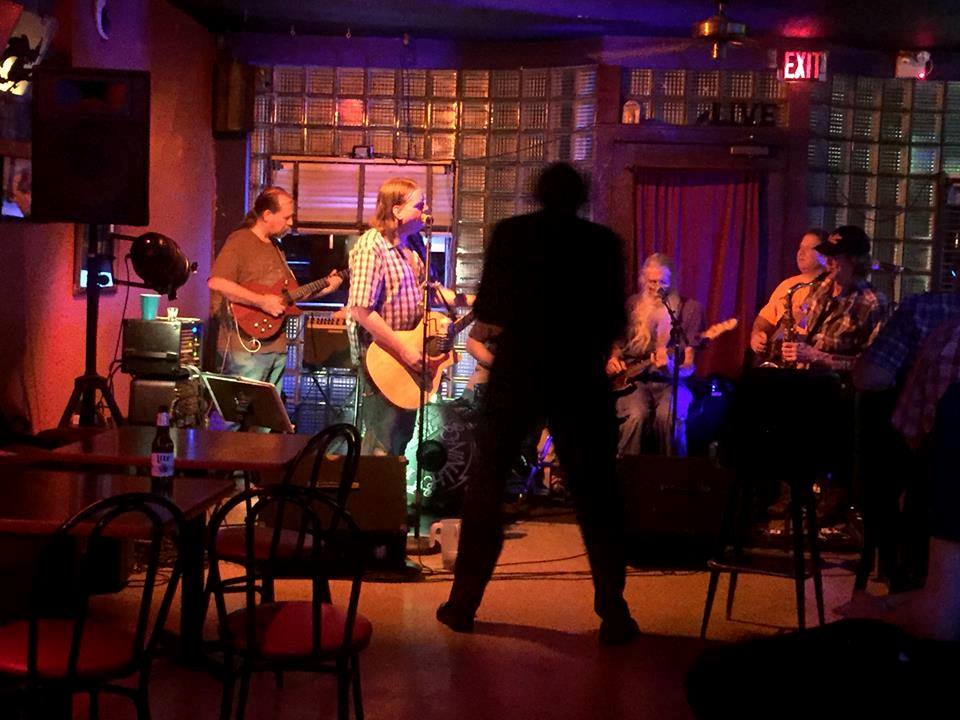
It’s hard to know what to make of Beatle Bob. He seems like the overwhelming result of an eight-year-old kid doubling down on their vision of the future, over and over and over again. He has, in a way, boxed himself in, but in such a specific way that lies outside of our standards of adulthood, work and life.
It’s also hard to separate Beatle Bob the myth, the one captured on all those videos, written about, loved and hated, from Beatle Bob the person, even after spending an hour and a half on the phone with him. I think it might be because he really is just as strange and just as committed as he seems at first glance. He so fully lives up to the caricature of himself in a way that makes him, as a person, almost fictional. We caught glimpses of the strength of his convictions — his passion for social work, his commitment to vegetarianism — but there’s something supernatural about his persona, which is what pulled us in at the very start.
He might have summed up his ethos best in the middle of our conversation:
“You may have had a rough day at work. You come home, and the bad day at work makes you feel more tired than you really are, but I tell people this: It happened to me once in a while. You drag yourself to the club, and when the music starts playing, it’s like a magic elixir. You plug into that and all of a sudden you forget how tired you were.”
The music, above all else. That’s Beatle Bob.
Note: This article has been updated as of September 15, 2021 to include more accurate information about Joey Skidmore’s life and music.




Comments are closed.